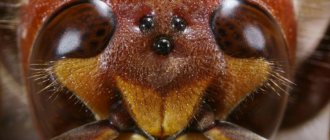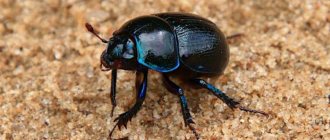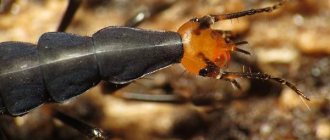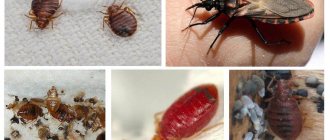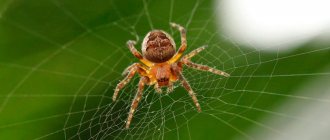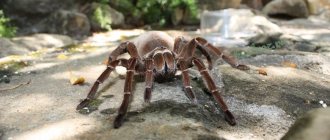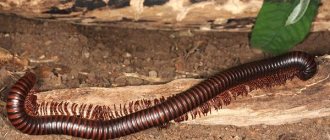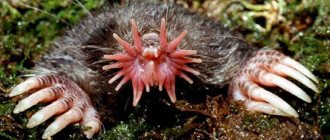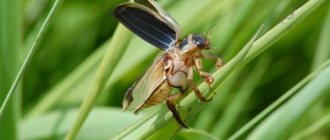Swallowtails or cavaliers are a family that unites the largest and most beautiful butterflies. The greatest diversity of species is found in the tropics, but interesting and colorful insects can also be seen on other continents. The family includes 700 species of swallowtails, 20 live in Russia. The swallowtail butterfly is a typical representative of the genus Papilio with long tails and wavy wings. The color of the insect is yellow with a black pattern and a red-blue eye. Despite the fact that the butterfly is found throughout the Palearctic, its numbers have declined sharply. To protect lepidoptera from complete destruction, the species was listed in the Red Book.
Morphological description
Swallowtail swallowtail (Papiliomachaon) is one of the most common representatives of its family. Carl Linnaeus named the species after the mythical Greek physician Machaon, who participated in the campaign against Troy. The size of the wings of the male is 65-80 mm, of the female - 75-95 mm. The main background of the wings is yellow. In the middle of the forewing there is a pattern of black stripes and spots, the base is darkened. Along the edge there is a wide black border with yellow hemispheres. The main part of the hind wings is yellow; closer to the edge there is a blue band with a black border. The outer edge has a red eye with a black outline. The photo shows that the edge of the hind wings of the swallowtail butterfly is wavy, the tails reach a length of 10 mm.
Information. Papiliomachaon of the first generation are light in color, representatives of the second generation are noticeably larger, their colors are richer and brighter.
The body of the moth is light-colored and covered with sandy hairs. There are longitudinal black stripes on the chest and abdomen. The head is round and inactive. On the sides are complex compound eyes. The organ of vision helps insects navigate in space, distinguish objects and some colors. In the frontal part there are long, segmented antennae ending in a club. Mouthparts are sucking type. This is a long black proboscis that allows it to drink nectar from flowers. In a calm state, it is twisted into a spiral.
Nutritional Features
Swallowtails love to fly in sunny weather and get their food, rich in useful microelements, from flowers and plants. Females prefer to feed alone, males gather in groups of 10-15 individuals, first looking for food in manure and excrement, and then sucking nectar from herbaceous plants:
- carrots,
- geraniums,
- rosehip,
- oregano,
- honeysuckle
If an insect needs water, it looks for moist but warm areas of the soil. Within 21 days, the butterfly must grow, find a place to feed, and lay eggs. After this she dies.
Subspecies
The wide distribution area of swallowtails has led to the formation of various subspecies, differing in color and size.
- P. m. bairdii is a black swallowtail butterfly native to North America. The dark shape is similar to the polyxene swallowtail. The main color is black. On the front wings there is a pattern of yellow strokes and spots located on a black border. On the hind wings, in addition to yellow and blue spots near the tails, there is an orange eye.
- P. m. ussuriensis - lives in Primorye and the Amur region, the group is characterized by large insect sizes. Females have a wingspan of 95 mm, and males have a wingspan of 85 mm. Insects are distinguished by their rich black and blue colors.
- P. m. hippocrates - a subspecies has settled in Japan and nearby islands, in which a blue stripe above a red eye is enclosed between two black ones.
- P. m. kamtschadalus are unique butterflies of bright yellow color with a faded black pattern and shortened tails. The endemic subspecies lives on the Kamchatka Peninsula.
- P. m. gorganus - continental subspecies is widespread on the plains of Russia, in the foothills of the Caucasus and Central Europe. What does the swallowtail butterfly, found in most European countries, look like? The wingspan does not exceed 60-70 mm, their tails are 6-7 mm long. The background of the wings is light yellow with a distinct black pattern and blue spots.
Features of the classification of butterfly species
The order Lepidoptera includes more than 158 thousand different families and subspecies. Lepidopterists - entomologists who study this type of winged insects, use various complex classification systems, in which the criteria that define this or that species of butterfly into a separate group are constantly being replaced.
The best classification is considered to be one in which all the various families and species are divided into 4 suborders:
- primary toothed moles;
- proboscis butterflies;
- heterobatmy;
- proboscis butterflies.
This classification system is used by professional lepidopterists and amateur collectors of various types of butterflies. Such insects are also divided according to their lifestyle into diurnal and nocturnal.
The largest nocturnal butterfly is Attacusaltas, with a wingspan of 300 mm. It is often confused in the sky with a bird due to its large size.
Toothed moths
These are the smallest lepidoptera, their size ranges from 4 to 15 mm. They have a gnawing type mouthparts, and their distinctive feature is their large antennae, the size of which reaches 75% of the size of their wings.
This subgroup includes up to 160 species. One of the most famous is the family of micropteryxcalthella.
Proboscis butterflies
Until 1967, this subgroup did not exist in the systematization of lepidopteran species. All representatives without proboscis were classified as toothed moths.
On the small wings of butterflies, the span of which is no more than 25 mm, there are tiny scales covered with cream or black spots. Then they were allocated to a special subgroup.
It includes moths of various species: AsopiafarinalisL, Dioryctricaabieteila.
Heterobathmya
This is the smallest subgroup, containing only one family, Heterobathmiidae. It includes no more than 10 species.
The most famous are:
- Heterobathmiadiffusa;
- Heterobathmiapseuderiocrania;
- Heterobathmiavalvifer.
Proboscis families
These are butterflies of a large number of families, differing in different sizes and colors. In total, this subgroup includes over 150 thousand species of Lepidoptera. Representatives of the Sailfish family are considered the most famous and beautiful. They have multi-colored colors.
These butterflies have wingspans ranging from 50 to 250 mm. On the surface of the wing scales there are characteristic patterns of spots of black, blue and red. The most famous representatives of this family are:
- Swallowtail, listed in the Red Book;
- "Glory to Bhutan";
- Queen Alexandra's Birdwing.
Another well-known family included in this subgroup is the Nymphalinae. Features include wide wings that do not have thickened or rough veins. They reach a span of 50-130 mm. The pattern on the wings is distinguished by a variety of patterns and variegated colors.
The most striking representatives of the Nymphalina family are Lepidoptera:
- Admiral;
- Daytime peacock eye;
- Mourning maid;
- Urticaria, etc.
Very beautiful individuals of the family Lepidoptera of the proboscis type, lead a diurnal lifestyle. They feed on the leaves of various plants and flower nectar.
Other well-known representatives of proboscideans are lepidoptera from the families of Belyanok, Golubyanka, and Pestryanka.
Appearance of the caterpillar
In May, the first generation swallowtail butterfly caterpillars appear. From the eggs they emerge black with many orange warts and a white area on the back. After several molts, the caterpillar becomes bright green with narrow black transverse stripes and orange spots on each body segment. The larva has three pairs of true legs on the thoracic segment and five pairs of pseudolegs on the abdomen.
The larva has a defense mechanism against enemies. This is the fork-shaped gland osmetria. It is located in the prothoracic segment and looks like orange horns. The secretions and smell of osmetria repel ants, wasps and flies. The larvae use it at an early age. It does not affect larger predators - birds. The caterpillars are hunted by tits, reed buntings, and nightingales. They destroy 40-50% of the offspring.
Reproduction and lifespan
Spring is considered a favorable period for butterflies to breed. They spin in the air as if they are dancing. During this period, they gather in flocks, but then scatter again. After mating games, the female lays eggs on a leaf or stem of a food plant. In one season, a female can lay up to 120 eggs. A week later, caterpillars emerge from the clutch.
They are distinguished by their black color with white or red spots, but as they develop, their color changes. The swallowtail caterpillar has a unique means of protection against predators on its head. These are two glands that are not visible in a calm state, but at the moment of danger two orange tubercles appear. They give off an unpleasant odor that can scare away predators.
To survive the winter cold, the caterpillar pupates and spends the winter in this state. The lifespan of the swallowtail butterfly is on average 20 days, so three generations can replace each other over the summer.
Related species
The Maak's swallowtail or blue swallowtail butterfly also belongs to the genus Papilio. The insect is named after R. K. Maak, a researcher of Siberia and the Far East. The wingspan of the largest butterfly in Russia is 125-135 mm. The color of the forewings of males has a green tint and black stripes. The hind wings are dark blue with blue spots. Females are brown or black in color; the hind wings have a pattern of red spots at the outer edge.
The Maaka tail-bearer lives in Primorye, Transbaikalia, Sakhalin, Korea, Japan and China. The insect lives in deciduous and mixed forests. Caterpillars feed on trees from the rue family - Amur velvet, Sakhalin velvet. The blue swallowtail is listed in the Red Book of the Sakhalin Region.
What does the podalirium butterfly eat?
The caterpillar of this species prefers fruit trees for this purpose:
- apple tree;
- cherry;
- plum;
- peach.
The butterfly feeds on the flowers of the following plants:
- viburnum;
- honeysuckle;
- snakehead;
- broom;
- scabioses;
- curly;
- cornflower.
In recent years, there has been a decrease in the number of podalirians. The reason is the use of a large number of chemicals to kill pests in the fields, as well as the cutting down of fruit trees.
The podalirium butterfly is protected in nature reserves in Russia and Ukraine. Places where the number of individuals is large are located in entomological reserves. Here, grazing of cattle is limited and the amount of pesticides used is reduced.
This species of butterfly is listed in the Red Books of Russia, Ukraine and Poland.
Habitats and lifestyle
In describing the lifestyle of the swallowtail butterfly, a significant role is given to two points: nutrition and reproduction. In the short time allotted to the imago, they must gain strength for mating and continue the race. Favorite habitats: steppes with various herbs, well-warmed forest glades and edges, roadsides and river banks. In the northern regions it is found in the tundra. Some individuals fly into cities. In the mountainous regions of the Alps they fly to a height of 2000 m. Adults are prone to migration, flying considerable distances in search of comfortable living conditions and food plants.
Butterflies fly in temperate climates from May to August, in the south - from March to November. The bulk of insects give two generations, in the north one, in North Africa - three.
Reproduction
The fertilized female lays single eggs on food plants. In the middle zone these are umbelliferous: dill, parsley, angelica, mustard plaster, celery and cumin. In other regions, rutaceae, birch, and asteraceae plants are found. The laying is carried out on the lower part of the leaf or stem, while the butterfly hangs in the air. The female's fertility is 100-120 eggs. They are initially green in color, then become yellow-brown.
A week later, a caterpillar 3 mm long appears. In warm weather it feeds a lot and grows quickly. Prefers to eat ovaries and flowers, less often leaves. The caterpillar changes through 5 instars. The adult larva grows up to 50 mm. The development period depends on weather conditions, in favorable circumstances it is 15-18 days. Before pupation, the caterpillar stops feeding and looks for a suitable place.
For pupation, the stem of a food plant or a nearby bush is selected. The insect is attached to the branch with a silky belt. Summer pupae of the first generation are green. After 2-3 weeks, the imago emerges from them. Overwintering pupae are brown; this stage lasts throughout the entire cold period.
Nutrition
Sailboats fly actively in warm sunny weather. Adults need additional nutrition on flowers and replenishment of microelements. Male swallowtails often gather in groups of 10-15 individuals on the wet banks of water bodies and sit on excrement and dung. What does the swallowtail butterfly eat? The main feeding occurs on the flowers of herbaceous plants:
- carrot;
- snakehead;
- oregano;
- honeysuckle;
- rose hip;
- geranium.
Having fulfilled its intended reproductive function, the insect dies. How long does a swallowtail butterfly live? The lifespan of the imago is 3 weeks.
Keeping at home
Let us dwell in more detail on the description of the procedure for breeding the swallowtail butterfly at home. In order for such a beauty to take root and reproduce in your home, you will need:
- an aquarium or terrarium, at the rate of 10 liters of volume for every 5 caterpillars;
- a small container of water where dill will be placed for feeding the caterpillars;
- branch for caterpillar pupation.
Did you know? To scare away possible enemies, the caterpillar uses osmeteria, a special protective organ located on its head. When the caterpillar is frightened, the osmeteria begins to emit a very unpleasant odor.
The bottom of the aquarium - or rather, now it would be more correct to call it an insectarium - should be lined with a layer of thick paper, its function is to absorb excess moisture. Humidity, in general, is one of the key points in the maintenance and breeding of caterpillars, and subsequently swallowtail butterflies. You can find a lot of conflicting information about how you should regulate humidity, or whether you should do it at all. In our case, the normal level is maintained by an open container of water containing dill.
You will be interested to know about keeping leopard geckos, chameleons, corn snakes, red-eared turtles, iguanas, salamanders, newts, and crocodile in the house.
You should also put several branches in the insectarium, preferably with shoots sticking out in different directions. The branch should lie on the surface, and the shoots should rise above the surface, in different directions. Such branches will be needed for caterpillar pupation.
Nutrition
What to feed the caterpillars was stated above; Now a few words about what swallowtail butterflies eat. In nature, insects feed on nectar. Give him a semblance of such nutrition - cut an apple or any other fruit, preferably one that is slightly beginning to rot, and leave it.
The method described above is not very effective, so it’s worth trying another option. Dissolve 2 teaspoons of honey in a glass of clean, settled water. Pour the resulting artificial nectar into a bowl or saucer. Carefully bring your pet and place it on the side of the bowl or on the edge of the saucer. Using a thin needle, pick up its proboscis and dip it in the nectar.
Lifespan
A butterfly lives on average three to four weeks.
Important! If you seriously decide to start breeding these beautiful creatures, you should know that some species of butterflies do not feed at all during their adult period.
During this period of life, the insect uses the energy accumulated during its stay as a caterpillar. So if you come across, for example, a peacock eye, and it doesn’t touch the food , don’t worry, everything is fine.
Limiting factors and protection
The number of swallowtail butterflies in Russia ranges from low to normal in different regions. The species is under threat in several regions: Smolensk, Moscow, Vologda. In these regions, as well as on Sakhalin, the swallowtail butterfly is listed in the Red Book. Negative factors affecting the number of butterflies are natural and economic. Natural problems:
- Low temperature, lack of sun during mating and ovipositor periods.
- Damage to larvae by fungus and parasites in a rainy, prolonged autumn.
- Early frosts, due to which the caterpillar does not have time to turn into a pupa and dies.
Anthropogenic factors:
- Forest fires and fallen grass.
- Insecticidal treatment of agricultural fields.
- Destruction of caterpillars and catching butterflies for collection.
A decrease in the number of Papiliomachaon is observed not only in Russia, but in European countries. The species is under state protection in Latvia, Lithuania, and Germany. As a precautionary measure, collecting butterflies and caterpillars is prohibited. In their habitats, the use of chemicals and grazing are regulated.
Range, habitat
The swallowtail butterfly is well known to residents of the European continent (except Ireland and Denmark) from the coast of the Arctic Ocean to the Black Sea and the Caucasus. Representatives of the species feel good in Asia, including tropical Asia, as well as in North America and North Africa.
Fact. Swallowtail gravitates towards forest, forest-steppe and mountain landscapes. In the mountains of Europe, for example, in the Alps, it is found at an altitude of 2 km above sea level, in Asia (Tibet) - at an altitude of 4.5 km.
Typical swallowtail habitats are open spaces such as:
- steppes and dry limestone meadows;
- fallow;
- mesophilic meadows;
- tall grass and wet meadows;
- city parks and groves;
- orchards and tree plantations.
Prefers well-warmed biotopes with damp plots where forage umbrellas grow. In the north, the swallowtail lives in the tundra, in forests it often flutters on the edges and clearings, and flies out to the roadsides. He does not shy away from artificial ecosystems, the so-called agrocenoses.
In the Caspian Lowland (Azerbaijan, Kalmykia and Astrakhan region) it adheres to dry hilly steppes or loose deserts with dunes. When migrating, individual swallowtails periodically fly into small and large cities, including megacities.
Return to content
Swallowtail butterfly: interesting facts
- In 2006, at the initiative of the German Nature Conservation Union, the swallowtail became a symbol of the country. In this way, people's attention is drawn to the plight of endangered species.
- The tails and eyes on the tips of the wings serve to distract the birds' attention from the vital organs of the insect.
- If a butterfly is disturbed, it begins to flap its wings sharply, trying to scare away the enemy with the flashing of bright colors.
- The moth can be found in the mountains of Tibet at an altitude of up to 4500 km.
- At the end of summer, the bright colors on the scales fade, and the pattern on the wings becomes faded and unclear.
- The intensity of the color of the wings depends on climatic conditions. The subspecies living in the northern regions have a sandy, almost white, main color. Insects in the south change their palette to a bright yellow hue.
Origin of the species and description
Photo: Swallowtail Butterfly
The species Papilio machaon belongs to the family of sailboats (Latin: Papilionidae). The species was discovered by the Swedish naturalist in 1758, Karl Lyney. The biologist named the butterfly in honor of the ancient Greek physician Machaon, who was a physician, surgeon and fought for the Greeks in the Trojan War (1194 BC). The doctor was the son of Asclepius (god of healing) and Epione.
Interesting fact: There is a legend that Doctor Machaon healed warriors wounded in battle. He took part in the Battle of Troy to win the hand and heart of Helen the Beautiful. But when he dies in one of the battles, his soul turns into a beautiful yellow butterfly with a black pattern on its wings.
Since the swallowtail's range is quite wide, up to 37 subspecies of the moth are distinguished. The most common among them:
- Orientis - south of Siberia;
- Ussuriensis - Amur and Primorye;
- Hippocrates - Japan, Sakhalin, Kuril Islands;
- Amurensis - basin of the middle and lower Amur;
- Asiatica - Central Yakutia;
- Kamtschadalus - Kamchatka;
- Gorganus - Central Europe, Caucasus;
- Aliaska - North America;
- Brutannicus Seitz - Great Britain;
- Centralis - Caucasian coast of the Caspian Sea, Northern Caspian Sea, Kura Valley;
- Muetingi - Elbrus;
- Syriacus - Syria.
There are other subspecies, but scientists do not recognize many of them, considering them only seasonal forms similar to the nominate individuals. The dependence of the color of wings on temperature does not allow taxonomists to come to a common opinion, as a result of which there is constant debate on this topic. Externally, the appearance is similar to the Corsican sailboat and the Alexanor sailboat.
Swallowtails (Papilionidae)
Russia
Butterflies of the Swallowtail family
Swallowtails (Papilionidae).
In the figure: 1 - Podalirius butterfly (Papilio podalirius), 1a - caterpillar, 1b - pupa, 1c - imago. 2 - Butterfly Alexanor (Papilio alexanor). 3 – Corsican swallowtail (Papilio hospiton). 4 - Swallowtail butterfly (Papilio machaon), 4a - caterpillar, 4b - pupa, 4c - imago. 5 - Caucasian zerinthia butterfly (Thais cerisyi). 6 - Polyxene swallowtail (Papilio polyxenes) or Zerynthia polyxena 7 - Zerynthia rumina butterfly (Zerynthia rumina). 8 — Archon butterfly (Archon apollinus), female. Sailboat Machaon
(Common swallowtail, Papilio machaon) is a diurnal butterfly from the family of swallowtails or cavaliers (Papilionidae).
Machaon was named by
the Swedish naturalist Carl
Linnaeus
in honor of the famous
physician
Machaon (ancient Greek mythology), the son of Asclepius and Epione, who took part in the Greek campaign against Troy during the Trojan War (1194-1184 BC).
The wingspan of males is 64-81 mm, females - 74-95 mm. The hind wings have “ tails
” up to 10 mm.
Common swallowtail (Papilio machaon)
Common swallowtail (Papilio machaon).
Swallowtail caterpillar
Swallowtail caterpillar.
Metamorphosis of the swallowtail butterfly
Transformation of a caterpillar into a pupa (stage of complete metamorphosis of the swallowtail butterfly)
Area
Swallowtail is found in Asia (including the tropics), North Africa and North America. In the mountains of Europe it rises to a height of 2000 m above sea level (Alps), in Asia - up to 4500 m (Tibet). Swallowtail
listed in the Red Books of Ukraine (1994), in Russia - in the Red Book of the Moscow Region (1998), Smolensk Region, Vologda Region (2006), Latvia (1998, Lithuania, Germany, Karelia.
Maak's swallowtail (male)
Maack's swallowtail or Maack's tailtail (Papilio maackii). Primorsky Krai.
Maak's swallowtail (female)
Maack's swallowtail (female) (Papilio maackii). Primorsky Krai.
Sailboat Maaka is the largest in Russia
The specific name is given in honor of Richard Karlovich Maack
-
Russian
naturalist, researcher of Siberia and the Far East. The female is larger than the male, her wingspan is up to 135 mm, in the male - up to 125 mm. The Maaka sailboat is listed in the Red Book of the Sakhalin Region (2001). Protected on the territory of the Kurilsky Nature Reserve.
Sailboat Ulysses
(Papilio ulysses) is a diurnal butterfly of the family Papilionidae. Wingspan up to 140 mm. The main background of the wings is black, in the male with large margins, the color of which varies among different subspecies from bright blue to blue and dark blue.
Australia.
Sailboat Ulysses (Papilio ulysses). Reverse side of the wings.
Sailboat Ulysses (Papilio ulysses). The upper and lower sides of the wings. Range of the Swallowtail Podalirium
The species is named after Podalirius, in ancient Greek mythology, a famous physician, the son of Asclepius (god of medicine and healing) and Epione (goddess of pain relief). Wingspan 68-72 mm; females are larger than males. The main color background of the wings is light yellow, the front pair has a black pattern of 7 vertical wedge-shaped stripes, the rear pair has a black-blue border. Hind wings with tails up to 15 mm long, at their base there is an ocellar spot.
Podalirius swallowtail (Papilio podalirius)
Podalirius swallowtail (Papilio podalirius).
Area of Russia
The sailboat Podalirium was included in the Red Book of the USSR (1984) as a species declining in numbers. Currently included in the Red Book of Ukraine (2009), category 2; in the Red Book of the Moscow Region (1998), category 1, Smolensk Region (1997), category 2, Vologda Region (2006), category 4.

